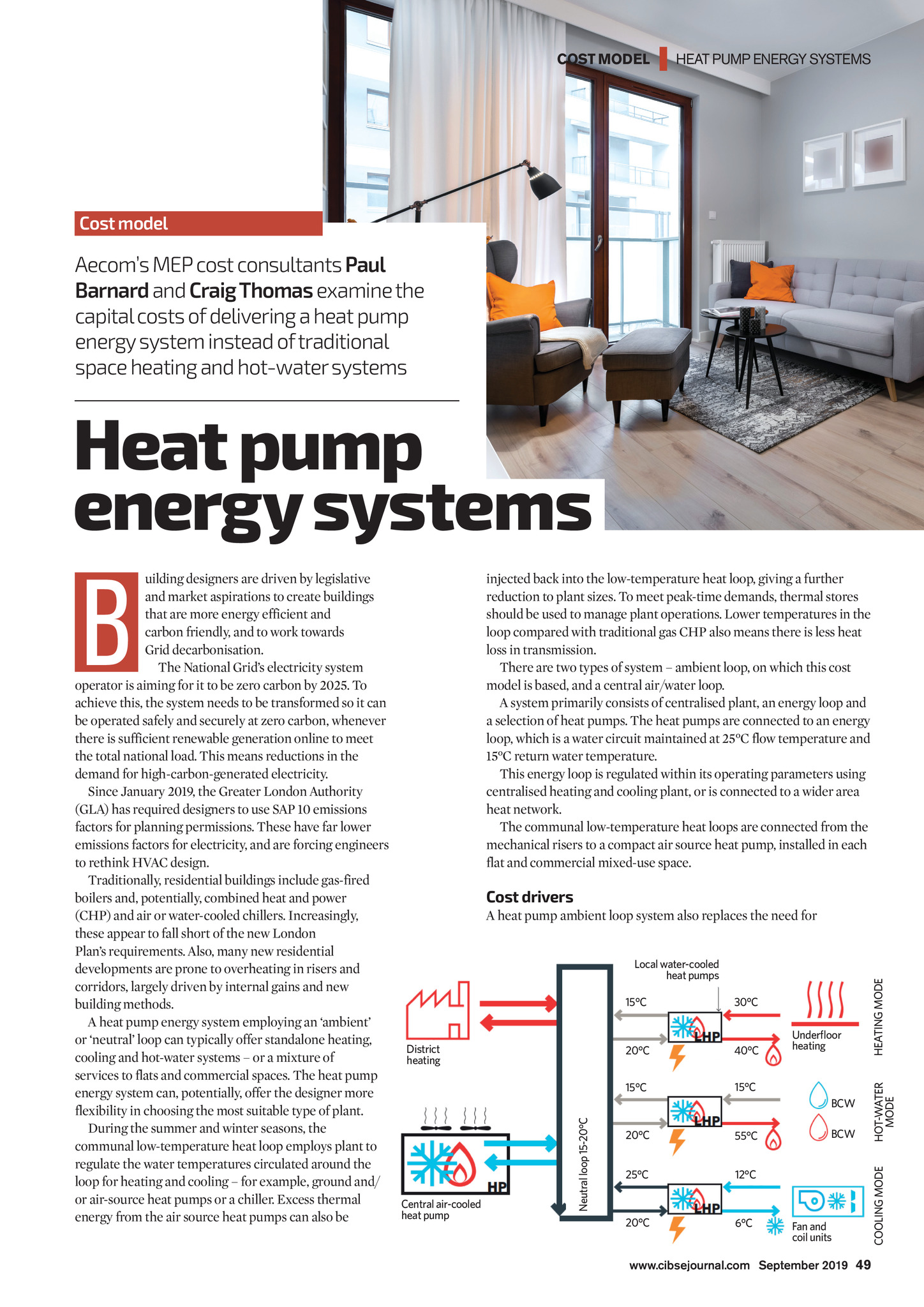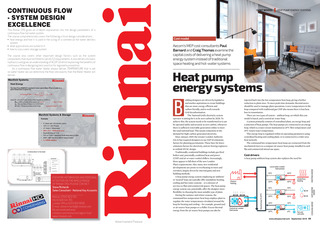


COST MODEL | HEAT PUMP ENERGY SYSTEMS Cost model Aecoms MEP cost consultants Paul Barnard and Craig Thomas examine the capital costs of delivering a heat pump energy system instead of traditional space heating and hot-water systems Heat pump energy systems injected back into the low-temperature heat loop, giving a further reduction to plant sizes. To meet peak-time demands, thermal stores should be used to manage plant operations. Lower temperatures in the loop compared with traditional gas CHP also means there is less heat loss in transmission. There are two types of system ambient loop, on which this cost model is based, and a central air/water loop. A system primarily consists of centralised plant, an energy loop and a selection of heat pumps. The heat pumps are connected to an energy loop, which is a water circuit maintained at 25C flow temperature and 15C return water temperature. This energy loop is regulated within its operating parameters using centralised heating and cooling plant, or is connected to a wider area heat network. The communal low-temperature heat loops are connected from the mechanical risers to a compact air source heat pump, installed in each flat and commercial mixed-use space. Cost drivers 15C 30C 20C 40C 15C 15C Underfloor heating BCW 55C 25C 12C 20C 6C BCW COOLING MODE 20C HOT-WATER MODE Local water-cooled heat pumps HEATING MODE A heat pump ambient loop system also replaces the need for Neutral loop 15-20C B uilding designers are driven by legislative and market aspirations to create buildings that are more energy efficient and carbon friendly, and to work towards Grid decarbonisation. The National Grids electricity system operator is aiming for it to be zero carbon by 2025. To achieve this, the system needs to be transformed so it can be operated safely and securely at zero carbon, whenever there is sufficient renewable generation online to meet the total national load. This means reductions in the demand for high-carbon-generated electricity. Since January 2019, the Greater London Authority (GLA) has required designers to use SAP 10 emissions factors for planning permissions. These have far lower emissions factors for electricity, and are forcing engineers to rethink HVAC design. Traditionally, residential buildings include gas-fired boilers and, potentially, combined heat and power (CHP) and air or water-cooled chillers. Increasingly, these appear to fall short of the new London Plans requirements. Also, many new residential developments are prone to overheating in risers and corridors, largely driven by internal gains and new building methods. A heat pump energy system employing an ambient or neutral loop can typically offer standalone heating, District cooling and hot-water systems or a mixture of heating services to flats and commercial spaces. The heat pump energy system can, potentially, offer the designer more flexibility in choosing the most suitable type of plant. During the summer and winter seasons, the communal low-temperature heat loop employs plant to regulate the water temperatures circulated around the loop for heating and cooling for example, ground and/ or air-source heat pumps or a chiller. Excess thermal Central air-cooled heat pump energy from the air source heat pumps can also be Fan and coil units www.cibsejournal.com September 2019 49 CIBSE Sep19 pp49-50 Cost Model.indd 49 23/08/2019 16:28